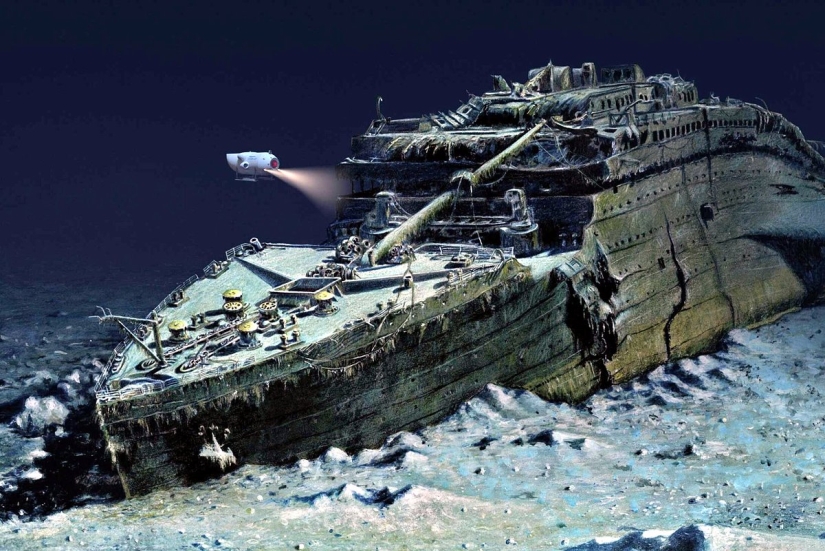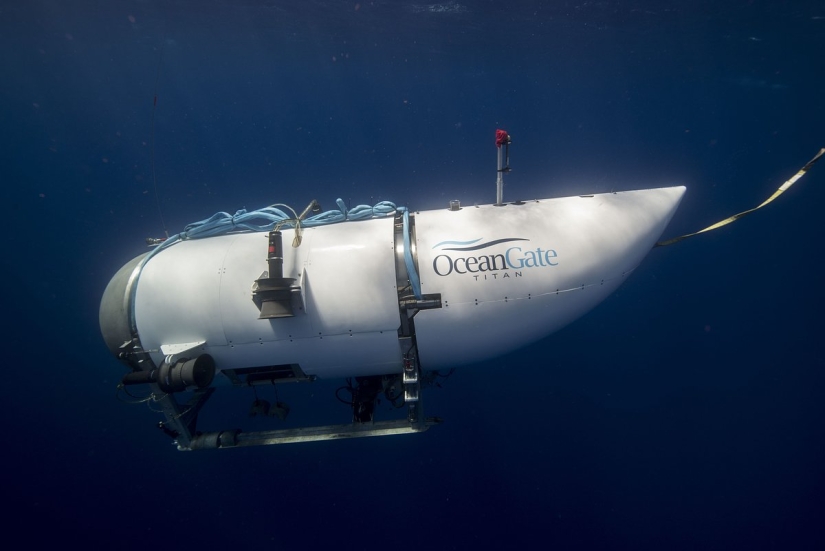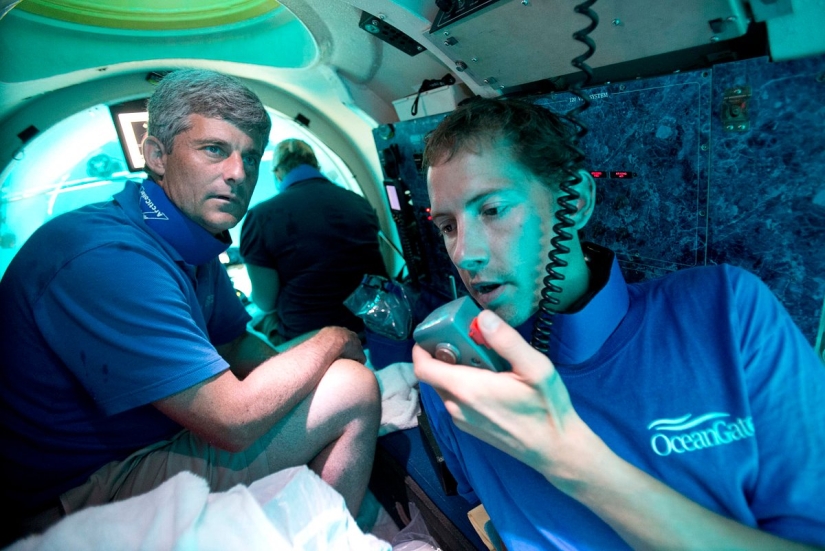The search for the missing bathyscaphe on the way to the Titanic was followed by the whole world. Why didn't the people inside have a chance to escape?
Categories: News | Technology | Tragedy | World
By Vika https://pictolic.com/article/the-search-for-the-missing-bathyscaphe-on-the-way-to-the-titanic-was-followed-by-the-whole-world-why-didnt-the-people-inside-have-a-chance-to-escape.htmlThe crew members of the submersible "Titan", descending to the sunken "Titanic", had no chance to escape. These are the sad results of a large-scale rescue operation, which the whole world has been following in real time since June 19. A few days later, the search led to the discovery of the wreckage of the Titan. Now experts, one after another, say that the descent vehicle had design errors, and they warned about them back in 2018. What problems could lead to the accident and what the underwater vehicle team wanted to investigate - in the material Pictolic".
The search and rescue operation was second to none. The US and Canadian navies, as well as commercial companies engaged in deep-sea operations, took part in the rescue of the crew of the Titan submersible. Two aircraft, a submarine, unmanned underwater vehicles, and sonar buoys were involved in the search for the vessel.
The wreck of the Titanic is located about 700 kilometers south of St. John's, the capital of the province of Newfoundland and Labrador (Canada). At the same time, the departure of the rescue operation was carried out from Boston Massachusetts (USA).
3 PHOTOS

1. The first information about the loss of the bathyscaphe "Titan" appeared on June 19. Then BBC journalists, citing OceanGate, which organized the expedition, reported the loss of communication with the crew 1 hour 45 minutes after the dive. At the time of disappearance, the device was at a depth of 3600 meters, there were still 200 meters to the desired target.
On Tuesday, June 20, a letter from the research group The Explorers Club reported that at 2 a.m. local time, the sonar detected sounds similar to knocking. Later, one of the Canadian rescue aircraft confirmed the noises. Sonobuoys recorded impact sounds in the search area every 30 minutes. Four hours later, additional sonar was activated, and the thud was still heard. The operation was moved to the source of the noise, but the search turned up nothing.
The time for the rescue operation was extremely limited since the bathyscaphe had a supply of oxygen for only 96 hours from the moment of the dive. However, the leader of the expedition, Michael Harris, had previously suggested that the crew had died. He stated that "something could have happened to the hull", and also expressed concern that the bathyscaphe exploded at a depth of about 3200 meters.

2. Later, his suspicions were confirmed. On Thursday, June 22, the head of the rescue operation, John Mauger, said at a press conference that a remotely operated vehicle found the bow of the missing Titan on the seabed, about 487 meters from the bow of the Titanic. Other elements of the bathyscaphe's plating were also found nearby. Experts described the wreckage as having come from a "catastrophic explosion". The main body of the apparatus and the bodies of the crew members have not yet been found, and the time of the explosion remains unknown. The search operation continues.
Among the tourists who bought tickets for the Titan was research businessman Hamish Harding. Also on board were Pakistani energy and technology tycoon Shahzada Dawood and his 19-year-old son Suleman; French diver and Titanic expert Paul-Henri Narjolet; founder and CEO of OceanGate Stockton Rush.
The cost of tickets for the tourist expedition from OceanGate was 250 thousand dollars for eight days of travel, including a dive to the wreck of the Titanic at a depth of 3800 meters.
250
one thousand dollars
dive to the wreckage of the Titanic
The company's website invited tourists to "go beyond everyday life and discover something truly extraordinary."
OceanGate has three types of submersibles at its disposal: Antipodes (which dive to a depth of 305 meters), Cyclops 1 (capable of descending to a depth of 500 meters), and Titan (declared diving depth is 4000 meters). The last submarine can accommodate five people: a pilot, three guests who bought tickets, and one more person - a "content expert". At the moment, information about two planned missions for June 2024 has been published on the company's website.
How was the "Titan"
The Titan was the world's first and only carbon fiber submersible designed to dive to a depth of 4,000 meters. The vessel was designed by OceanGate in collaboration with NASA, Boeing, and the University of Washington.
The bathyscaphe weighed approximately 10.5 tons, and its approximate dimensions were 6.7 meters x 2.8 meters x 2.5 meters. Manufacturers assured that "thanks to the innovative use of modern materials, the Titan is lighter, more spacious, and more comfortable than any other deep-sea vehicle exploring the ocean today." The first Titan expedition took place in 2018.

3. There are no seats in the submarine - the crew was located on the floor, leaning on the rounded walls of the apparatus. There were also no windows, and there was only one small porthole with a diameter of about 50 centimeters. The crew of the bathyscaphe spent about ten hours in it after the dive. They had neither water nor food with them. Prior to diving, a few days before the expedition, they were advised to follow a special diet, as there was no toilet on board. However, just in case, a small sanitary zone and a vessel resembling a bottle were provided on the bathyscaphe.
The submersible was controlled using a Logitech G F710 wireless controller, which was originally designed for video games and then optimized for a bathyscaphe. Under water, the Titan was held by ballast. In a normal situation, after inspecting the Titanic, the team had to release the loads, which would lead to the ascent of the device to the surface. At the same time, even after surfacing, the crew was not able to get out on their own, since the hatch opened only from the outside.
Design errors
The commander of the Mir-2 submersible, Yevgeny Chernyaev, believes that a mistake was made in the design of the Titan. According to him, the bathyscaphe must have a special device - a pinger that emits a signal, as well as navigation - one device and two fixed rods. Thanks to such equipment, the computers on the ship could calculate its coordinates.
We see that none of this is on the Titan. All this must be thought about and designed at the stage of creating the apparatus.
Evgeny Chernyaev
commander of the Mir-2 deep-sea submersible
According to Chernyaev's visual assessment, there were no emergency buoys or flashing beacons on the bathyscaphe. The first floats up and brings the radio beacon to the surface, and the second helps to find the device in the dark.
In addition, back in 2018, OceanGate was heavily criticized by experts. Then David Lockridge worked for the company and served as director of marine operations. He prepared a report in which he said that the ship needed additional tests and noted its potential danger to passengers. In particular, thanks to Lockridge, it turned out that the Titan's window was certified only to work at a depth of up to 1300 meters.
Then began a lawsuit between OceanGate and Lockridge, which led to the dismissal of the latter. “Passengers paying for the trip will not be made aware of the experimental nature of the mission,” Lockridge’s lawyers wrote in the lawsuit.
Sometime later, 38 experts, including deep-sea explorers and oceanographers, sent a letter to OceanGate CEO Stockton Rush, warning that the company's approach and its decision to abandon traditional assessment of specialists could lead to disastrous consequences. The document specifically pointed out that OceanGate is using misleading marketing practices, as the company assured that Titan complies with risk-assessed security (DNV) standards. However, OceanGate did not plan to officially certify the vessel.
What did the sunken bathyscaphe want to explore?
In addition to the tourist purpose of the expedition, OceanGate stated that it was a research one. So, in the surface vessel that serves and lowers the Titan, there are scientists who planned to study bacteria on the growths and wreckage of the sunken ship. They wanted to focus on animals and bacteria that live in the bottom mud near the Titanic.
eDNAtec has confirmed its collaboration with OceanGate. The team planned to collect water samples and use tools to detect environmental DNA. The missions of previous years also included similar studies. The results of the work were to be published in a scientific journal.
Keywords: Titanic | Bathyscaphe | Underwater ship | Sea | Ocean | Tragedic accident | Rescue operation
Post News ArticleRecent articles

Man cave, or "man cave" — is embodied in the life of children's dreams of their own cozy nook where you can relax from bustle and ...

If you are tired of everything (and especially people), if you desperately need a little magic in life, then we have an idea for ...
Related articles

The largest maritime disaster of the early 20th century claimed the lives of 1,490 people, among whom there were many people who ...

In Britain of the 19th century, girls who reached the age of 13 were recognized as adults. This was not at all surprising, because ...

Date of 15 April 1912 was the largest Maritime disaster of the twentieth century — in the Atlantic, on the way from Southampton ...

Kitchen – one of the most popular places in the world. Here is the mystery of cooking a favorite food, family gatherings, ...